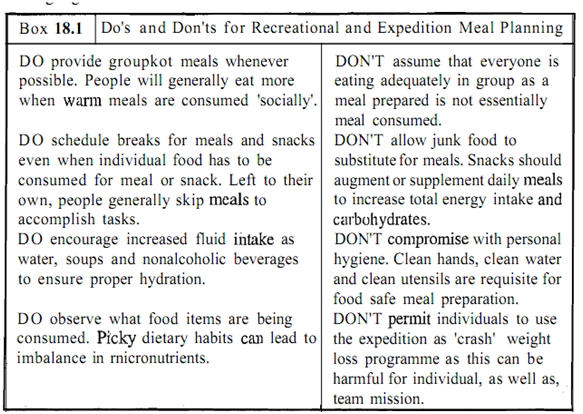Define Food Intake during Polar Expeditions?
Observations made by Easty (1967) at Halley Bay, the British Antarctic survey base during 1961-62 expeditions indicate mean calorie intake 3600 Kcal/man day and 12.7% of those calories were supplied by protein, 39.8% by fat and 48.1% by carbohydrates. During winter months (polar night), when men were confined to the limits of base and activities showed a marked fall and there was a gain of body weight - 2.5 kg. Various Indian Antarctic expeditions have a common observation of increase in body weight that is mainly due to an increased intake. Several factors are responsible for an enhanced appetite in cold regions that include the palatability of food, cold temperature, emotional factors (e.g. loneliness) and changes in physical activity and habits. The average energy expenditure was found to be 3100 Kcal/day indicating an active life style of expedition members.
The dietary pattern of natives of arctic and sub arctic regions and their obvious success in coping with harsh environment have influenced arctic explorers to choose diets high in fat in general belief that this may be helpful. Such information is largely anecdotal and probably relates more to the availability of local foods (seal, fish, whale, caribou) and familiarity of Eskimos with these foods. However, such diets are rich in n-3 fatty acids, which play an important role in the prevention of cardiovascular diseases.
Despite the arguments that can be made for suitability of high fat diets in the cold, there is an evidence suggesting that carbohydrates are more important than fat in fuelling metabolic heat production during cold exposure. Increase in energy expenditure resulted in an increase in carbohydrate and fat oxidation while protein oxidation remains unaffected.
Let us go through the Do's and Don'ts to be followed during polar expedition which are highlighted in Box.

From cold environments, we now move on to hot environments. So, from the poles, let us move towards the equator and find out nutritional requirements of people in extreme hot conditions.